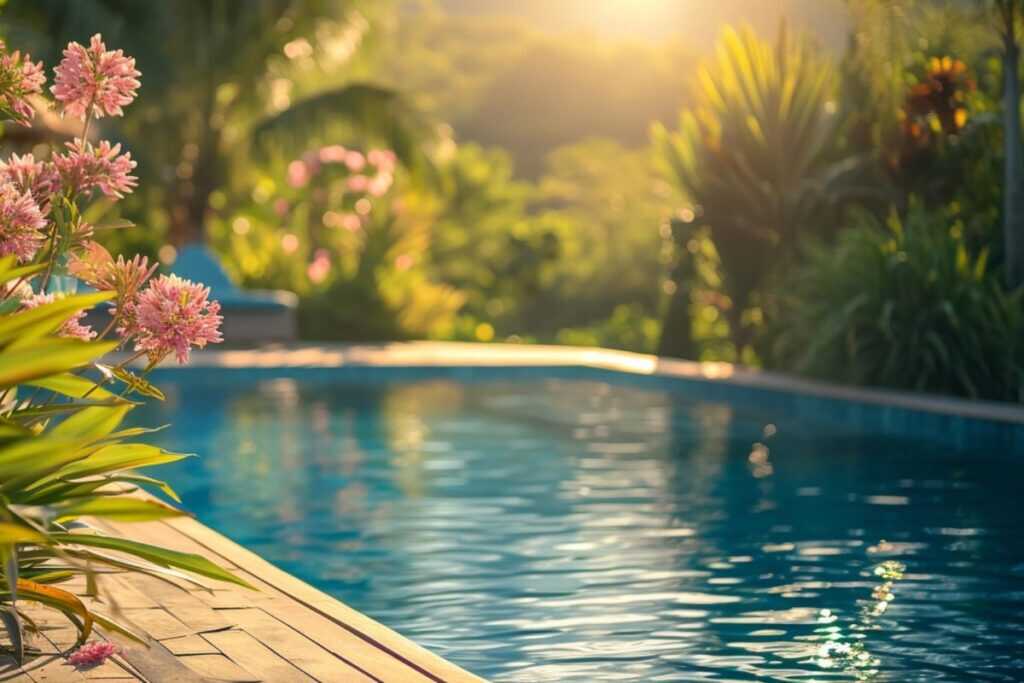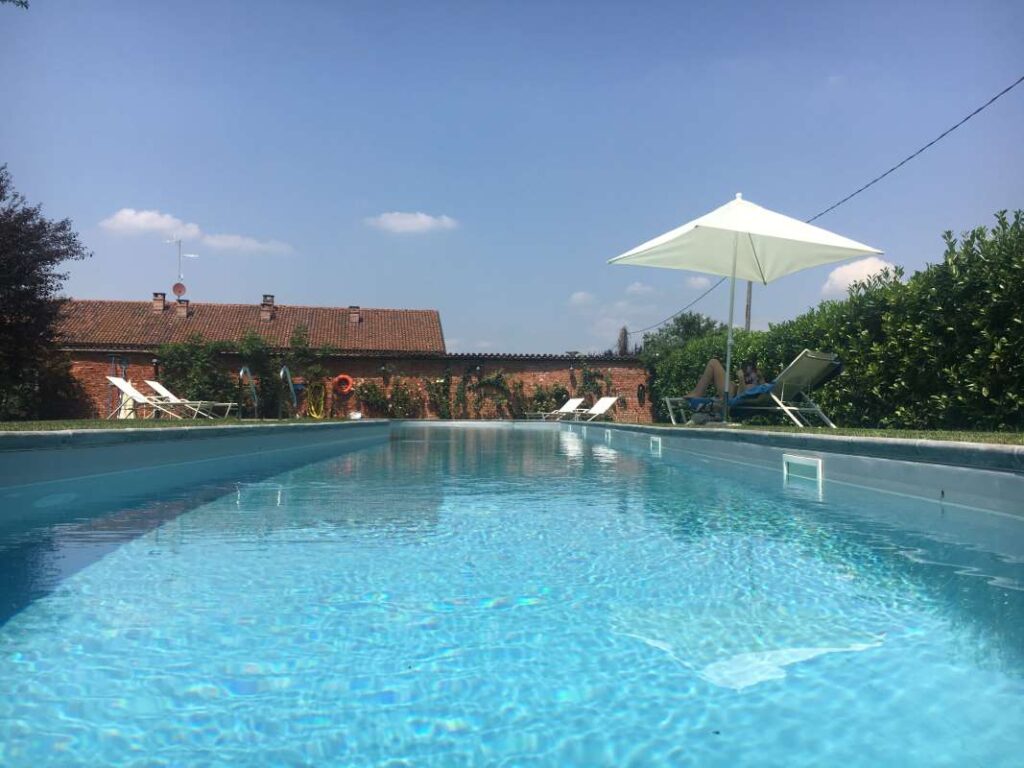Understanding the Chemistry Behind Pool Sanitizers
Explore the fascinating chemistry behind pool sanitizers and discover how they keep your pool safe and clean for enjoyment all year round.
This blog post delves deep into the essential chemistry that powers pool sanitizers, exploring the various types, their functions, and the science that ensures your swimming pool remains a safe and inviting space. From chlorine to bromine and beyond, understand how these compounds work at a chemical level and the best practices for maintaining your pool’s water quality.
Introduction
Maintaining a clean and safe swimming pool is essential for both enjoyment and health, but have you ever wondered about the chemistry behind pool sanitizers? Pool sanitizers are vital in keeping the water free from harmful bacteria and algae. Understanding the science behind these chemicals can help pool owners make informed decisions about their pool maintenance practices. In this article, we will explore the different types of pool sanitizers, their chemical properties, how they function, and practical tips for maintaining optimal water quality.
The Role of Pool Sanitizers
– Importance of Water Sanitization: The primary role of pool sanitizers is to kill harmful pathogens that can thrive in pool water. Without proper sanitization, pools can become breeding grounds for bacteria like E. coli, norovirus, and various algae species. – Types of Pool Sanitizers: The most common pool sanitizers include chlorine, bromine, and saltwater systems. Each of these has unique chemical properties and efficacy. – Chlorine: This is the most widely used pool sanitizer. Its active form, hypochlorous acid (HOCl), is highly effective at killing bacteria and viruses. Chlorine works by breaking down organic contaminants and is also a powerful oxidizer. – Bromine: Similar to chlorine, bromine is an effective sanitizer but operates differently. It remains stable over a wider pH range and is less affected by sunlight, making it ideal for indoor pools or hot tubs. – Saltwater Systems: These systems generate chlorine through the electrolysis of saltwater, providing a continuous supply of this essential sanitizer without the need for manual addition.- Chemical Reactions in Action: When a sanitizer is introduced into the pool, it engages in a series of chemical reactions. For example, chlorine reacts with ammonia and organic matter in the water, forming chloramines, which can cause unpleasant odors and irritate the eyes. Proper maintenance helps manage these reactions.
Understanding Chlorine Chemistry
Chlorine is ubiquitous in pool sanitation, and its chemistry is fascinating. – Chlorine Compounds: Chlorine is available in several forms, including gas, liquid, and granular. The most common types used in pool maintenance are sodium hypochlorite (liquid) and calcium hypochlorite (granular).- Dissociation in Water: When chlorine is added to water, it dissociates to form hypochlorous acid (HOCl) and hypochlorite ions (OCl-). The balance between these two forms depends on the water’s pH.- Effectiveness of HOCl: Hypochlorous acid is much more effective as a disinfectant than hypochlorite ions. Thus, maintaining a slightly acidic pH (between 7.2 and 7.6) enhances the sanitizer’s efficacy.- Chlorine Demand: The concept of chlorine demand refers to the amount of chlorine required to sanitize the pool effectively. This demand can be influenced by several factors, including bather load, organic debris, and sunlight.- Shock Treatments: To counteract chlorine demand, pool owners often perform shock treatments, which involve adding a large dose of chlorine to eliminate chloramines and restore water clarity.
Exploring Alternatives: Bromine and Saltwater Systems
While chlorine is the most common pool sanitizer, bromine and saltwater systems offer distinct advantages.- Bromine Benefits: Bromine has several advantages over chlorine. It operates effectively over a wider pH range and is less volatile. As a result, bromine remains active longer, especially in warmer water, making it ideal for spas and pools with high temperatures.- Saltwater Chlorination: This method has gained popularity due to its convenience. Saltwater systems convert sodium chloride into chlorine through electrolysis, providing a steady supply of chlorine without the need for regular manual additions. This reduces the harshness often associated with traditional chlorine treatments.- Chemical Reactions in Saltwater Systems: In a saltwater pool, the electrolytic cell splits salt molecules into sodium and chlorine. The chlorine then acts as a sanitizer, while the remaining sodium reverts to salt, creating a continuous cycle.- Environmental Considerations: Many pool owners are now looking for eco-friendly options. Bromine and saltwater systems can be less harsh on the environment and reduce the need for additional chemicals.
Practical Applications and Best Practices
Understanding the chemistry behind pool sanitizers is only part of the equation; implementing best practices is essential for optimal water quality.- Regular Testing: Pool water should be tested at least once a week to monitor chlorine levels, pH, alkalinity, and stabilizer levels. Test kits or strips can help pool owners maintain the right balance.- Maintaining Proper pH: Keeping the pH levels between 7.2 and 7.6 enhances the efficacy of chlorine. Use pH increasers or decreasers as necessary.- Shock Treatments: Regularly shock your pool to eliminate chloramines, particularly after heavy use. This will ensure the water remains clear and safe.- Proper Circulation: Ensure your pool pump and filtration systems are functioning correctly. Good circulation helps distribute sanitizers evenly and reduces the chance of stagnant water, which can breed algae.- Debris Removal: Regularly remove debris from the pool, such as leaves and dirt, to minimize the organic load that sanitizers must handle.- Consider Professional Services: For those seeking convenience, professional pool services, such as those offered by
Superior Pool Routes, can provide expert maintenance and ensure your pool’s water chemistry is always balanced.
Conclusion
In conclusion, understanding the chemistry behind pool sanitizers is crucial for maintaining a healthy swimming environment. Pool sanitizers like chlorine and bromine play an essential role in preventing harmful bacteria and algae growth. By implementing the best practices discussed, pool owners can enjoy crystal-clear water while ensuring the safety of all swimmers. Whether you’re considering purchasing a pool route or simply aiming to enhance your pool maintenance knowledge, understanding these chemical interactions will empower you to provide the best care for your pool. Dive into a deeper knowledge of your pool’s chemistry and explore opportunities with
Pool Routes For Sale to start your journey in the pool service industry.



